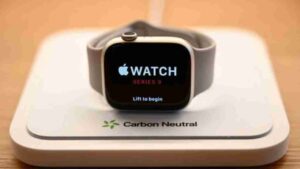The Apple vs Masimo Legal Battle: Unraveling the Blood-Oxygen Sensor Controversy
The Apple vs Masimo Legal Battle: Unraveling the Blood-Oxygen Sensor Controversy:In recent legal developments, tech giant Apple finds itself entangled in a heated legal dispute with Masimo, a Southern California-based medical technology company. The crux of the matter revolves around the blood-oxygen measuring feature introduced in Apple Watch Series 6 and subsequent models. Masimo alleges that Apple’s implementation of this technology infringes on its patented innovations, leading to a series of legal maneuvers and potential repercussions for Apple’s flagship wearable devices.

Background of the Apple vs Masimo Case
Masimo, known for its advancements in medical technology, claims that Apple’s blood-oxygen measuring feature replicated its patented technology. Specifically, Masimo accuses Apple of utilizing unique algorithms and light sensor arrangements in its Apple Watch to generate blood oxygen readings akin to those produced by Masimo’s devices.
The legal saga began with Masimo filing a lawsuit against Apple, alleging patent infringement and misappropriation of trade secrets. Additionally, Masimo contends that Apple has recruited some of its employees, further complicating the already contentious situation.
Details of the Allegations
Masimo’s allegations extend beyond patent infringement. The company asserts that Apple has misappropriated trade secrets and confidential information related to its pulse oximeter technology. This accusation adds another layer of complexity to the legal battle, suggesting a potential breach of intellectual property rights.
Furthermore, Masimo’s legal claims include the poaching of its employees by Apple. The recruitment of key personnel from one company to another is a common point of contention in intellectual property disputes, as it raises questions about the transfer of proprietary knowledge and expertise.
Apple’s Defense and Denials
Apple vehemently denies all allegations brought forward by Masimo. The tech giant argues that its implementation of the blood-oxygen measuring feature is independent of Masimo’s technology. In its defense, Apple contends that the Apple Watch, equipped with life-saving capabilities, plays a crucial role in detecting heart problems in users.
The company’s stance emphasizes the potential health benefits of Apple Watch, positioning it as a device with a positive impact on users’ well-being. This defense strategy aims to not only refute the allegations but also to showcase the societal value of Apple’s wearable technology.
Legal Maneuvers and Regulatory Decisions
The legal battle has seen several twists and turns, with regulatory bodies getting involved. In a court filing on Monday, Masimo revealed that Apple is planning to redesign two Apple Watch models, the Series 9 and Ultra 2, to exclude the blood-oxygen sensor. This redesign has received approval from the U.S. Customs and Border Protection.
The court filing did not disclose the specifics of how Apple plans to remove the blood-oxygen sensor. Analysts, however, speculate that this change may be implemented through a software update. The approval from the U.S. Customs and Border Protection adds a layer of legitimacy to Apple’s redesign efforts in response to the ongoing legal dispute.
Masimo had initially secured a favorable ruling from the U.S. International Trade Commission in late October. This ruling prompted Apple to temporarily halt sales of Apple Watch models with the blood-oxygen sensor just before Christmas. Apple’s subsequent appeal led to an order allowing the return of these models to stores while the appeal is under review.
The legal landscape remains uncertain as the final verdict from the US Court of Appeals is pending. Despite the temporary return of the Apple Watch models in question to stores, the possibility of a ban looms until the court reaches a final decision.
Implications for Consumers and the Wearable Tech Industry
The legal battle between Apple and Masimo has far-reaching implications for both consumers and the wearable tech industry. Consumers who have purchased or are considering purchasing Apple Watch Series 9 or Ultra 2 may face uncertainties regarding the availability of certain features.
The outcome of this case may also influence how tech companies approach innovation and the incorporation of new features in their products. Intellectual property disputes can set precedents and shape the strategies of companies operating in the highly competitive tech industry.
Conclusion: Navigating the Legal Landscape of Wearable Technology
As the Apple vs Masimo legal battle unfolds, the tech and medical communities are closely watching the developments. The clash between innovation, intellectual property rights, and market competition underscores the complexities inherent in the wearable tech industry.
While Apple defends its position and emphasizes the health benefits of its devices, Masimo remains steadfast in its claims of patent infringement and misappropriation. The final verdict from the US Court of Appeals will determine the resolution of this dispute and the potential impact on Apple’s flagship wearable devices.
As consumers await clarity on the fate of the blood-oxygen sensor in Apple Watch Series 9 and Ultra 2, the legal landscape of wearable technology continues to evolve, shaping the future trajectory of innovation and competition in the tech industry.




